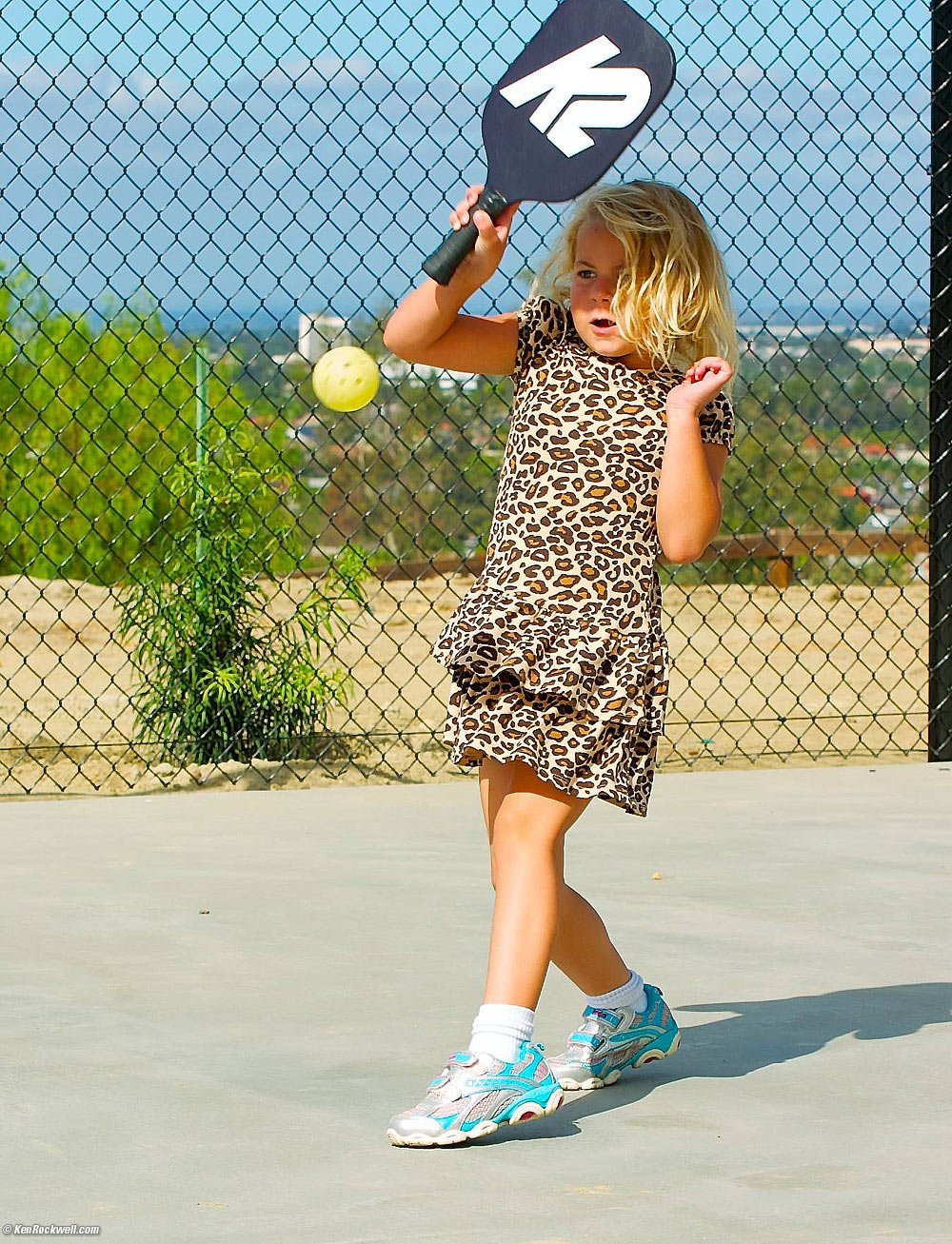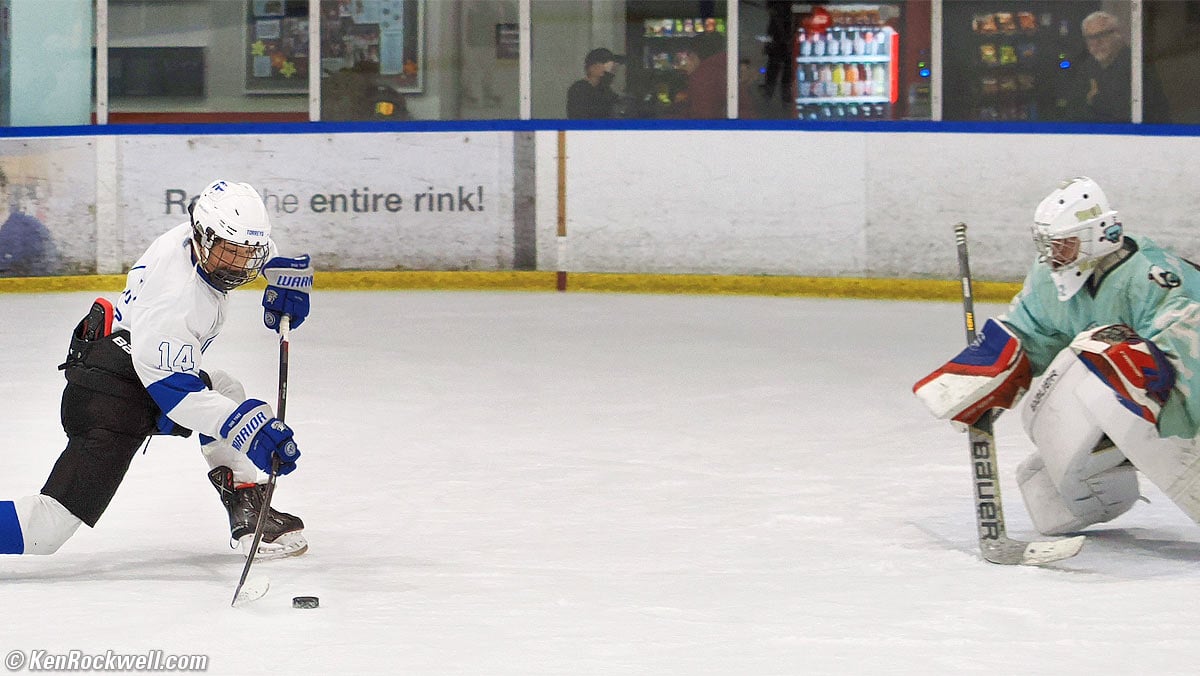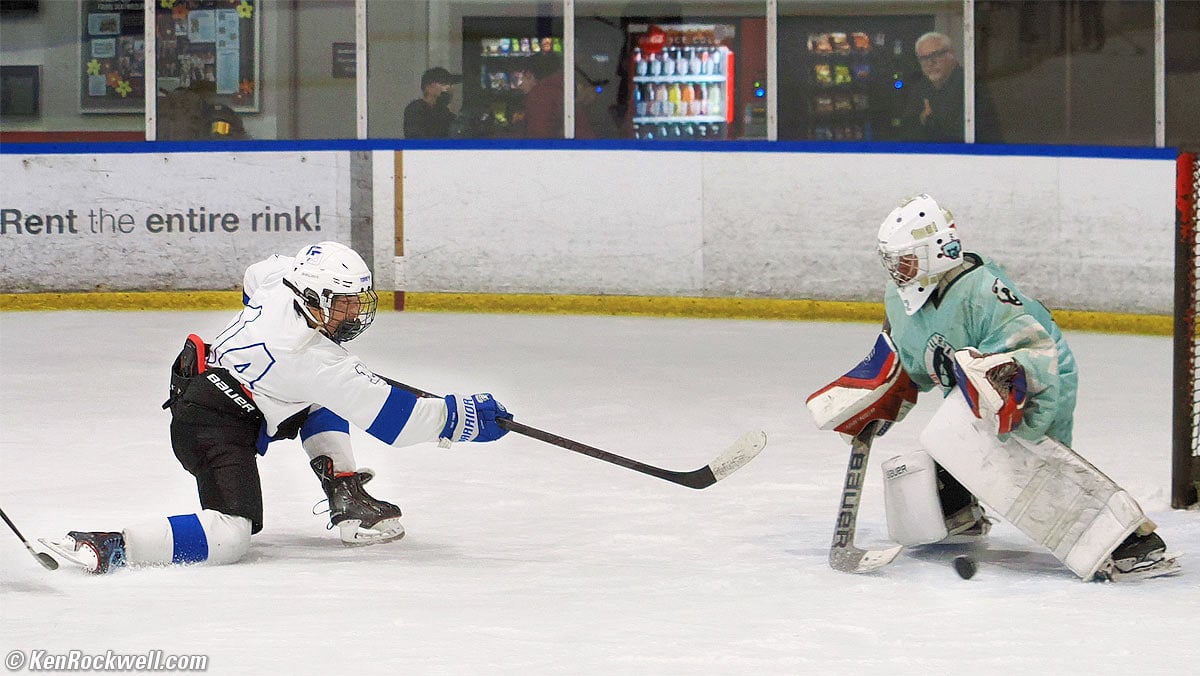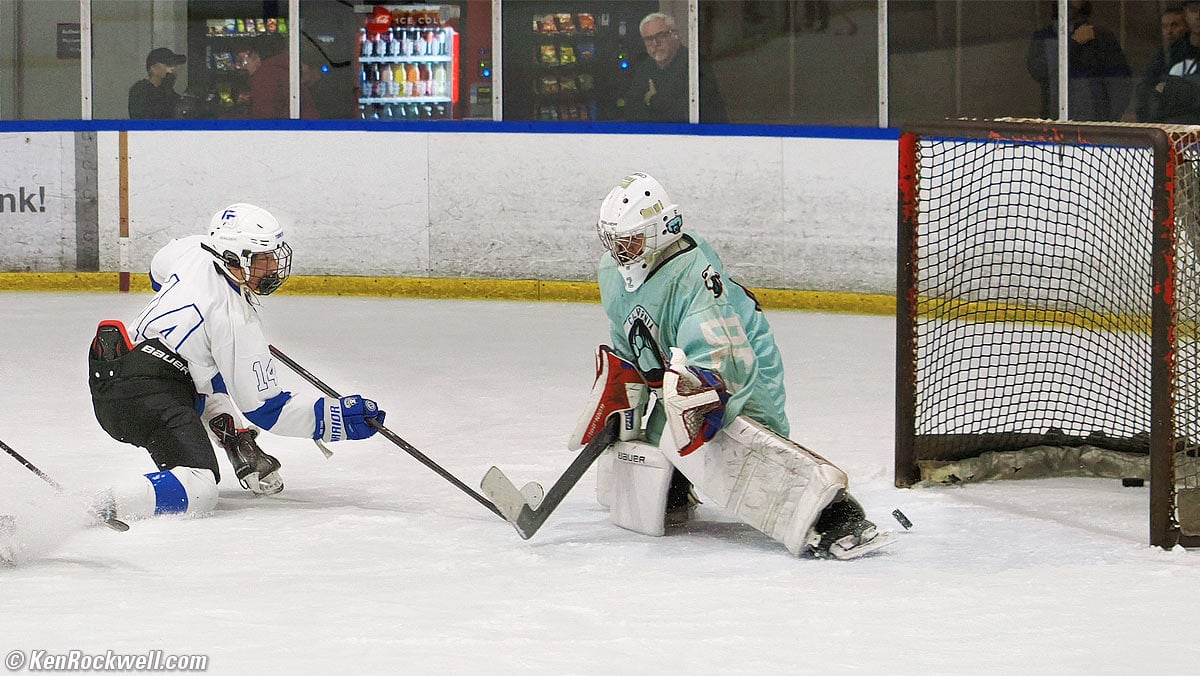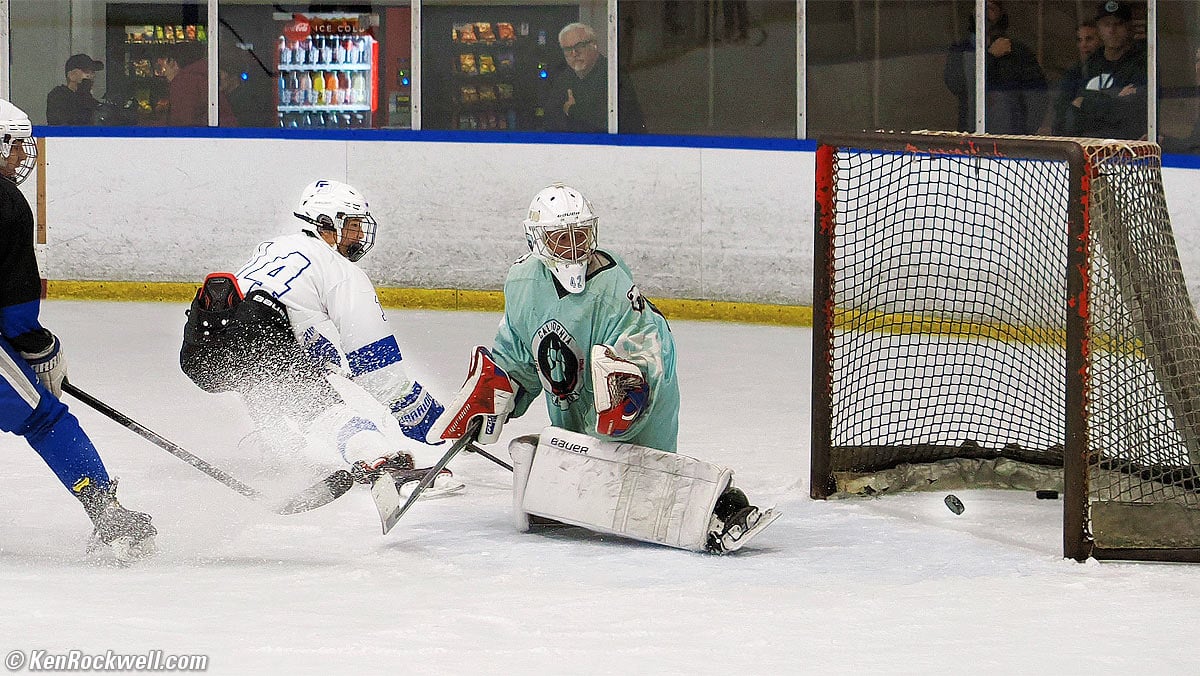Home Donate New Search Gallery Reviews How-To Books Links Workshops About Contact
Frames per Second
Why it matters for sports
This all-content, junk-free website's biggest source of support is when you use any of these links to approved sources when you get anything, regardless of the country in which you live. Thanks for helping me help you! Ken.
May 2023 Better Pictures Canon Nikon Sony Fuji OM SYSTEM All Reviews
Our eyes perceive time in windows of about 1/30 of a second. These windows have blurry edges, so unlike a camera shutter's instant opening and closing, we see things moving slower than about 30 frames per second as discrete events, and things moving faster as just blurs. (See also Best Shutter Speeds for Water.)
Ideally we'd shoot sports at about 30 frames per second, and we'd catch most of the poses though which we see life happen. At 30 FPS, we'd usually be able to pick out the exact pose we'd like from all those frames.
Hollywood movies are shot at 24 frames per second, which is why we have slight jumpiness. Video is shot at about 60 fields (TV) or frames (HD) per second, which is why live sports events seem to have fluid motion on TV, while NFL newsreels shot on film at 24 FPS have jumpier motion.
When we shoot sports, even shooting at the fastest frame rates offered by DSLRs, 14~16 FPS in the Nikon D6 and Canon 1DX III, we still can't catch every facial expression and juxtaposition in our sports shots. Even at 16 FPS, each frame is completely different when there's action.
This is why the more frames we can shoot per second, the more likely we'll be able to catch the front-cover shot we want.
When we cheap-out with consumer DSLRs that only run 8 FPS, we only have half the chance of catching that once-in-a-lifetime action shot as we would at 16 FPS.
Here's a series shot at 8 FPS on the Nikon D2Hs, the best low-budget sports camera available back in 2014 (about $225 used in 2023 if you know How to Win at eBay):
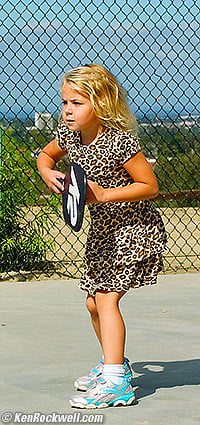 |
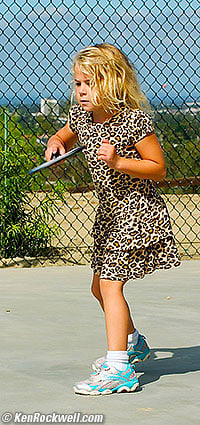 |
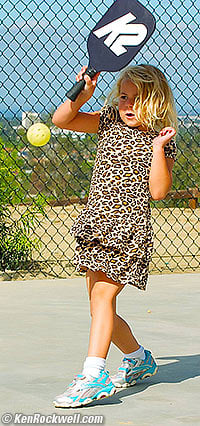 |
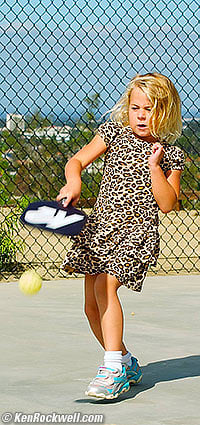 |
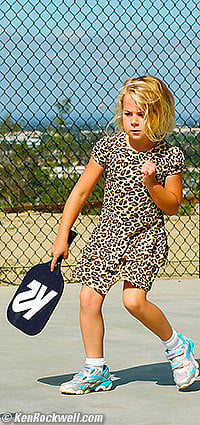 |
These 5 frames were shot at 8 frames-per-second. The last frame was shot 500 milliseconds (a half-second) after the first. Each frame is 125 mS or 1/8 second apart, and of course you get the last frame at the end.
Each frame is completely different from the others. As you can interpolate mentally, even twice as fast at 16 FPS every frame would still be completely different.
Now that mirrorless cameras frequently can track action at 30 FPS, pro sports shooters love them.
The more FPS you get, the more great sports shots you'll get.
Consumer DSLRs like the 5D Mk III and Nikon D850 are for landscapes and portraits with the occasional amateur sports shoot thrown in, but if your subject is in motion, more frames per second always beats more pixels or dynamic range or higher ISOs.
What's in your picture is always more important than how clean it is. If you have to compromise, always get a camera with as many FPS as you can afford for sports.
Today my favorite budget-friendly camera short of a 120 FPS Nikon Z9, 50 FPS OM-1 or 30 FPS Canon EOS R3 is the Canon EOS R7, which cheerfully runs silently at 30 FPS. When looking at cameras, be sure the speed is rated with tracking autofocus and auto exposure; many mirrorless cameras have modes at higher frame rates, but that can't track focus or exposure at higher speeds.
Katie tries out the new pickleball court, 26 October 2014. (Nikon D2Hs, Nikon 70-300mm VR at 85mm, f/9.5 at 1/350 at ISO 200, NEF processed in Apple Aperture 3, Perfectly Clear V2.)
If 8 FPS was good in 2014 to photograph my 6-year-old playing pickleball, 50 FPS is much better for ice hockey.
Here's why you need 50 FPS. These are just four frames covering less than one-tenth of a second from first to last:
Hockey, Toronto, 6:25 P.M., Wednesday, 03 May 2023. Mild crops from OM SYSTEM OM-1 at 50 FPS in SH 2, 3,200 x 2,400 pixel original images, i-Enhance Picture Mode, M.ZUIKO DIGITAL ED 12-40mm F2.8 PRO Ⅱ at 40mm (80mm eq.) at f/2.8 at 1/640 at Auto ISO 2,000, +1 stop exposure compensation (LV 8.0), Perfectly Clear (now called Radiant Image). click any to enlarge.
Even at 50 FPS each image is completely different.
© Ken Rockwell. All rights reserved. Tous droits réservés. Alle Rechte vorbehalten. Alla rättigheter förbehållna. Toate drepturile rezervate. Ken Rockwell® is a registered trademark.
Help Me Help You top
I support my growing family through this website, as crazy as it might seem.
The biggest help is when you use any of these links when you get anything. It costs you nothing, and is this site's, and thus my family's, biggest source of support. These places always have the best prices and service, which is why I've used them since before this website existed. I recommend them all personally.
If you find this page as helpful as a book you might have had to buy or a workshop you may have had to take, feel free to help me continue helping everyone.
If you've gotten your gear through one of my links or helped otherwise, you're family. It's great people like you who allow me to keep adding to this site full-time. Thanks!
If you haven't helped yet, please do, and consider helping me with a gift of $5.00.
As this page is copyrighted and formally registered, it is unlawful to make copies, especially in the form of printouts for personal use. If you wish to make a printout for personal use, you are granted one-time permission only if you PayPal me $5.00 per printout or part thereof. Thank you!
Thanks for reading!
Ken.
